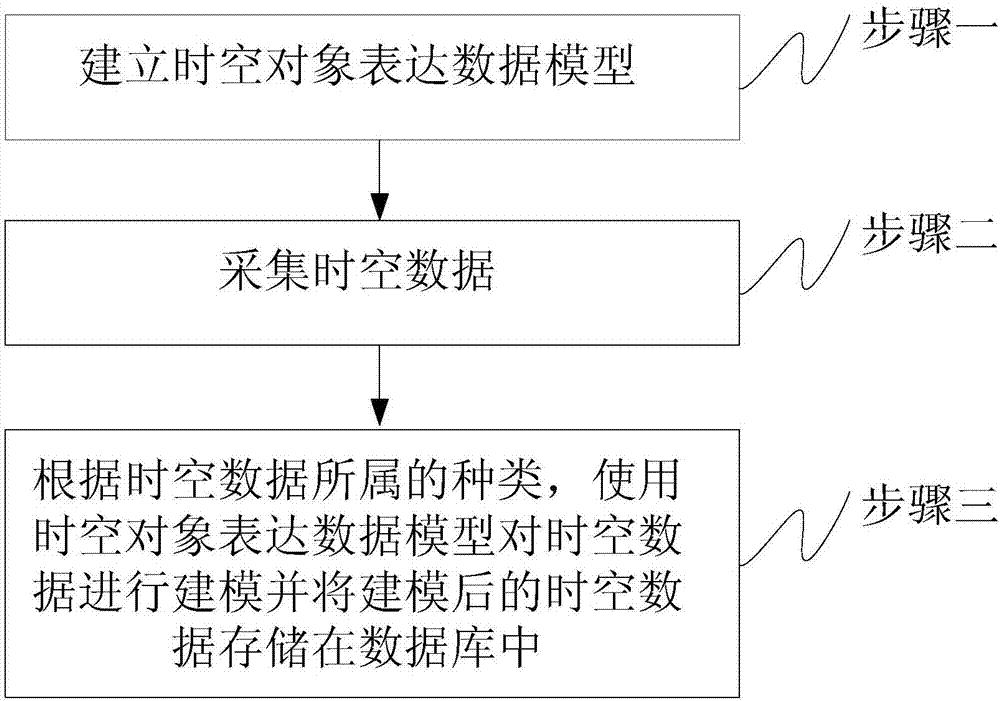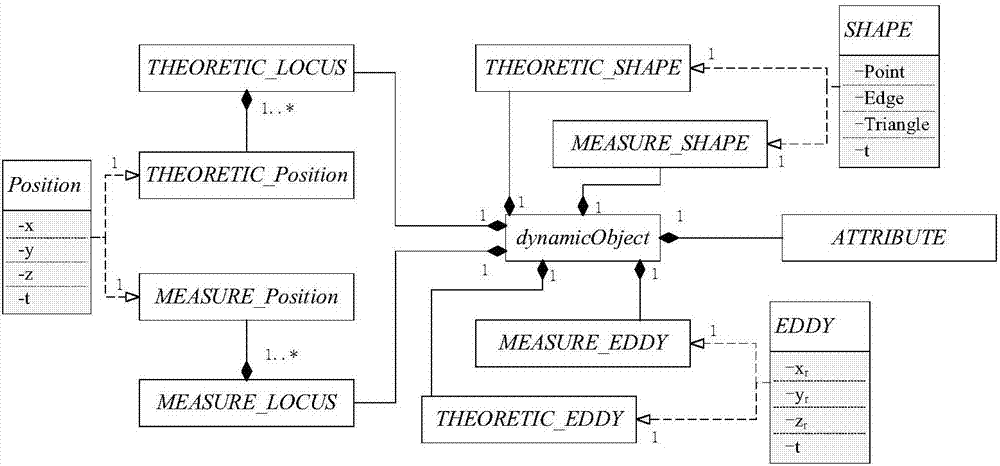Pan-knowledge space-time object expression database building method
A technique for establishing methods and spatio-temporal data, which is applied in the field of establishing a general-knowledge spatio-temporal object representation database, which can solve phenomena that cannot effectively express spatial or temporal continuity, cannot express the geometric shapes and postures of spatio-temporal objects, integrated spatio-temporal expression, and four-dimensional Insufficient spatial and temporal data expression ability and other problems, to achieve the effect of effective spatial and temporal analysis, diverse expression methods, and broadening the application field
- Summary
- Abstract
- Description
- Claims
- Application Information
AI Technical Summary
Problems solved by technology
Method used
Image
Examples
specific Embodiment approach 1
[0026] Specific implementation mode one: the general knowledge-based spatio-temporal object expression database establishment method of this embodiment, such as figure 1 shown, including:
[0027] Step 1. Establishing a spatio-temporal object representation data model; types of spatio-temporal object representation data models include: rigid body motion model, fluid motion model, field model, quasi-dynamic model, and static model.
[0028] Step 2. Collect spatio-temporal data.
[0029] Step 3: According to the type of the spatio-temporal data, the spatio-temporal data is modeled using the spatio-temporal object representation data model and the modeled spatio-temporal data is stored in the database.
[0030] The beneficial effects of this embodiment are as follows:
[0031] First of all, most of the current GIS spatio-temporal data models describe the movement of two-dimensional spatial objects, and lack the ability to express two-dimensional and three-dimensional integration...
specific Embodiment approach 2
[0035] Specific implementation mode two: the difference between this implementation mode and specific implementation mode one is: in step one,
[0036] The field fusion with time and space as the "information core" can realize the two-way mapping between knowledge space and physical space, and express the physical space and knowledge space in a holographic space. However, physics uses motion to describe the continuous changes in time and space of objects, so the spatio-temporal GIS model should start with the description of motion characteristics. However, the movement forms of space-time objects in the objective world are ever-changing, and it is unrealistic to use a unified model to describe the movement of space-time objects. Since the behavior is one of the specific manifestations of the motion of the space-time object, this paper divides it into five types of motion forms: rigid body motion, fluid motion, field, quasi-dynamic and static according to the behavior character...
specific Embodiment approach 3
[0079] Specific embodiment three: the difference between this embodiment and specific embodiment one or two is:
[0080] The quasi-dynamic object set family in the quasi-dynamic model further includes: shape change, attitude change, position change, initial shape, initial position, initial attitude, and sampling time; wherein, the shape change is a function of the shape of the space-time object and the sampling time, Attitude changes as a function of the inclination, direction, and inclination of the space-time object; position changes as a function of time and three-dimensional coordinates in the spatial reference coordinate system;
[0081] The quasi-dynamic attribute set family in the quasi-dynamic model further includes: the ID of the spatio-temporal object, the name of the spatio-temporal object, the value of the spatio-temporal object, and the change value of the spatio-temporal object attribute over time. which is Figure 5 The data structure in the UML diagram shown i...
PUM
 Login to View More
Login to View More Abstract
Description
Claims
Application Information
 Login to View More
Login to View More - R&D
- Intellectual Property
- Life Sciences
- Materials
- Tech Scout
- Unparalleled Data Quality
- Higher Quality Content
- 60% Fewer Hallucinations
Browse by: Latest US Patents, China's latest patents, Technical Efficacy Thesaurus, Application Domain, Technology Topic, Popular Technical Reports.
© 2025 PatSnap. All rights reserved.Legal|Privacy policy|Modern Slavery Act Transparency Statement|Sitemap|About US| Contact US: help@patsnap.com



